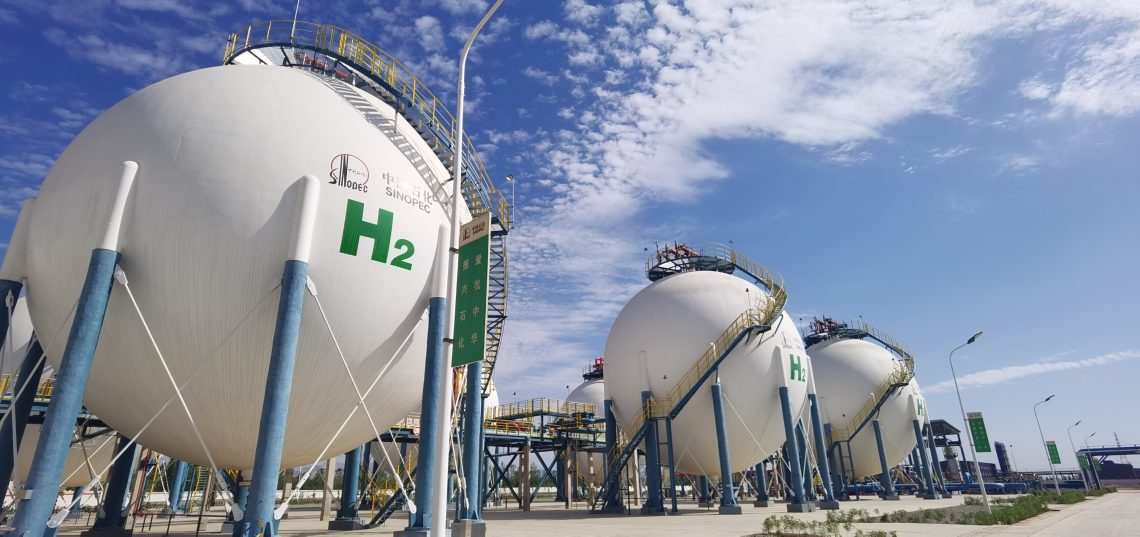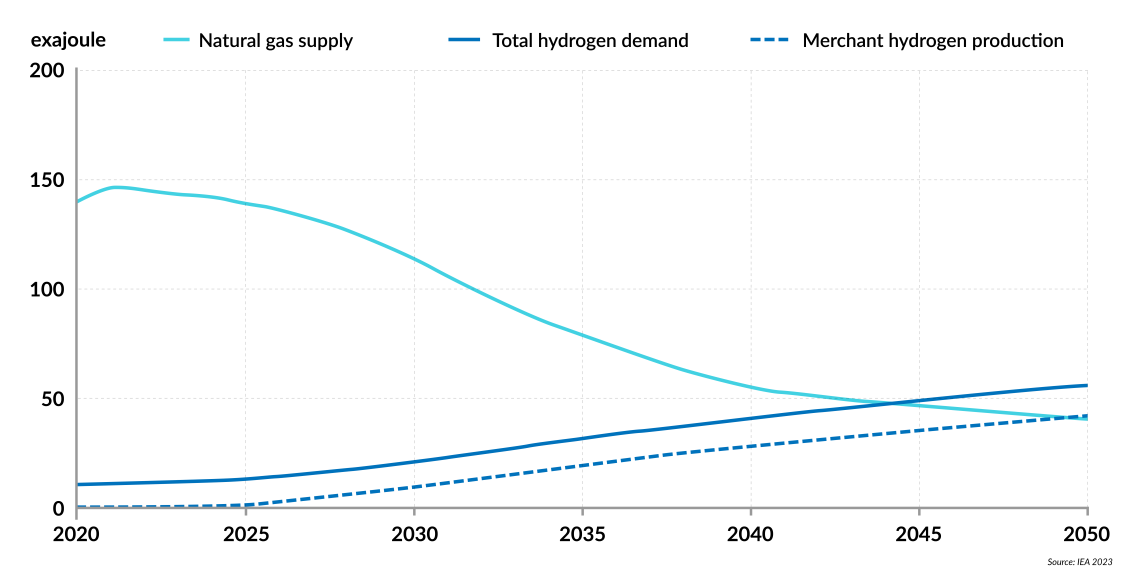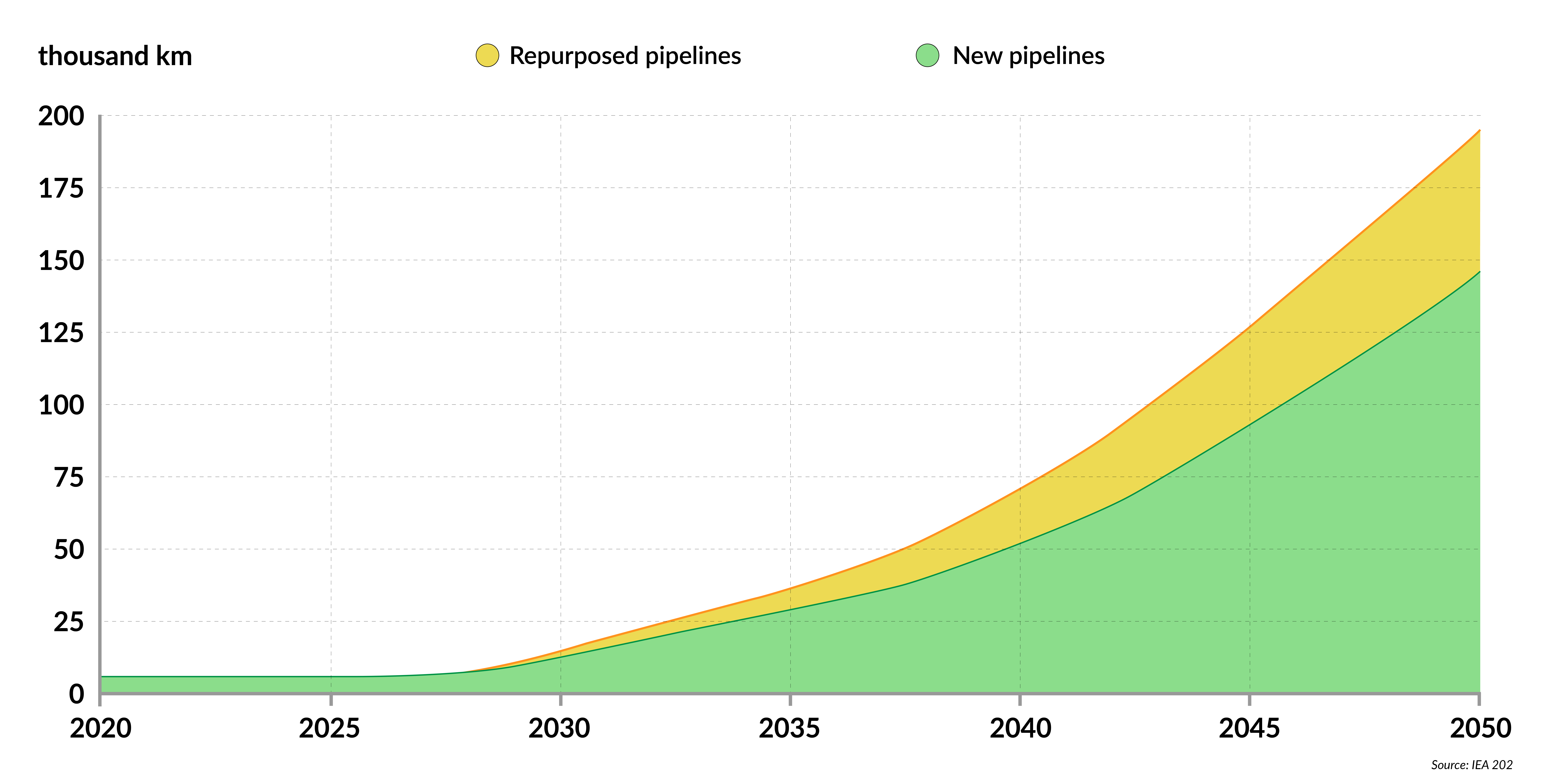The future of global hydrogen
Green hydrogen projects, while promising, still grapple with technological and geopolitical uncertainties, as well as financial constraints and environmental concerns.

In a nutshell
- Green hydrogen has the potential to play a major role in the green transition
- Technical, environmental or regulatory challenges could derail new projects
- Global players like the EU, China and the U.S. differ in their development strategies
Clean hydrogen has the potential to help reduce carbon emissions, especially in sectors that are difficult to decarbonize, such as heavy manufacturing and energy-intensive industries like steel or chemicals. It is also emerging as a key solution for electricity storage, addressing the intermittency issues of wind and solar energy. Currently, however, its primary use is in traditional refining and industrial applications. It is mostly produced using fossil fuels, offering no real and sustainable climate benefits.
Hydrogen’s potential as a clean energy source
In 2021, the global demand for hydrogen stood at 94 million tons, representing about 2.5 percent of the world’s energy consumption. The International Energy Agency (IEA) predicted in 2022 that this demand would grow to just 115 million tons by 2030, with fewer than 2 million tons from new applications. However, by 2050, the global hydrogen market could surge, reaching between 600-650 million tons, potentially fulfilling over 20 percent of global energy needs.
By 2030, both the demand and production of hydrogen are set for moderate growth, potentially offsetting the consumption of 14 billion cubic meters of natural gas annually, 20 million tons of coal and 360,000 barrels of oil per day. Approximately 12 million tons of hydrogen might be exported every year. To achieve a projected clean hydrogen production of 30 million tons from today’s figure of less than 1 million tons, an investment of $170 billion in electrolyzers and carbon capture, utilization and storage (CCUS) projects is required.
Back in 2020, this writer highlighted the risks of viewing hydrogen as an immediate panacea because of the current inefficiency of electrolysis and the energy-intensive process of converting hydrogen into synthetic fuels. Producing hydrogen leads to a 45-60 percent energy loss in the supply chain process. Converting electricity to hydrogen results in a 25 percent energy loss, and the energy in hydrogen is roughly 60 percent less efficient compared to liquefied natural gas due to its lower energy density.
National and regional hydrogen strategies
By 2020, both Germany and the European Union recognized that their hydrogen strategies would require significant imports. In 2022, the EU doubled its 2030 production target for renewable hydrogen from 5 million tons to 10 million tons and also plans to import another 10 million tons by 2030. Importing this amount requires nearly 500 terawatt hours of renewable electricity, equivalent to 14 percent of the EU’s entire electricity consumption.
Facts & figures
Global natural gas and hydrogen supplies’ projection in a net-zero emissions scenario

Beyond Europe, nations like Japan and Australia, under their Hydrogen Energy Supply Chain (HESC) project, have shown preferences not only for green hydrogen – derived from renewables and electrolysis – but also for “clean” blue hydrogen that incorporates CCUS. The commercial viability and suitability of these projects, given higher shipping costs, however, remains unclear for the time being.
Can existing gas pipelines handle hydrogen?
European gas industry research indicates that the current gas pipeline networks can largely be repurposed for hydrogen transport. Using these existing pipelines can cut down investment costs by 50-80 percent compared to building new ones. By 2040, Europe anticipates having around 39,700 km of extended hydrogen pipeline infrastructure, linking cost-effective production areas with export destinations.
Furthermore, a consortium of gas enterprises from Germany, Austria and Italy is planning a 3,300-kilometer hydrogen pipeline connecting North Africa to Italy, Austria and Germany. Spain and France are looking at the H2Med project – an underwater pipeline spanning their nations, meant to transport hydrogen from Spain to France through the Mediterranean Sea.
More by Frank Umbach
The European Union’s LNG supply security
Securing the EU’s electricity supply
A recent German study evaluated over 30 steels and found that their performance in transporting hydrogen under standard operational conditions in gas supply networks does not differ from that of natural gas. A blending ratio of 20 percent hydrogen could result in a 6 percent reduction in CO2 emissions.
However, a recent U.S. study, which delved into the blending of hydrogen with natural gas and considered various material, economic and operational factors, advises caution. It indicated potential pitfalls, noting that hydrogen can easily permeate solid metals, making pipeline steel more prone to cracking.
Challenges in transporting liquid hydrogen
When it comes to low-carbon fuel transportation, hydrogen can be transported as liquid hydrogen (LH2), ammonia (NH3) or as a liquid organic hydrogen carrier (LOHC) over different distances. McKinsey estimates that of the anticipated 660 million tons required by 2050 to achieve EU climate objectives, 400 million tons will necessitate long-distance transport. For routes exceeding 2,000-2,500 kilometers, maritime transportation emerges as the most cost-effective choice.
When compared to natural gas, liquid hydrogen is easier to store but presents more technological challenges, including the need to maintain a temperature of -253 degrees Celsius to prevent boil-off, a notably colder temperature compared to LNG’s -162 degrees Celsius. Transportation over great distances can result in over 30 percent energy loss, and in some instances – for example on a 9,000-kilometer shipping route – up to 40 percent might be lost due to boil-off and fuel usage for propulsion, a figure that is almost nine times higher than that of LNG shipping.
Additional energy losses of about 5 percent occur during the delivery and regasification at hydrogen-import terminals. Countries like Japan, Australia and Saudi Arabia are betting heavily on ammonia as a more practical low-carbon fuel due to its milder cooling requirements (-33 degrees Celsius) and existing transport options. Japan is fostering a shift in Southeast Asian nations from coal to ammonia to cut carbon emissions without closing existing coal plants. However, the high costs involved in substantial ammonia co-firing rates restrict its current feasibility.
Financial constraints and investment strategies
Green hydrogen developments necessitate expanded solar and wind power facilities for the electrolytic hydrogen production process, involving substantial expenses. For instance, retrofitting an LNG terminal to handle ammonia demands an 11-20 percent higher investment than constructing a new one, while a hydrogen storage tank can cost 50 percent more than its LNG counterpart.
Substantial foreign investments are vital in Africa, where most local energy firms are financially constrained. The Africa Green Hydrogen Alliance, involving countries like Egypt and South Africa, needs an estimated $450-900 billion for hydrogen projects by 2050. Technological uncertainties have made investors wary, although recent initiatives like the United States government’s new tax credits for clean hydrogen projects and the European Commission’s proposed “hydrogen bank” seek to foster investor confidence and promote hydrogen development.
Facts & figures
Global hydrogen pipeline length in a net-zero emissions scenario

Water scarcity concerns
In the EU, sunny regions like Spain and Italy are optimal for green hydrogen production, as is North Africa. The EU has expanded its hydrogen “partnership of equals” to countries in Africa and South America. It seeks to diversify its future hydrogen imports to prevent new geopolitical dependencies, to respect the decarbonization interests of its partner countries and to avoid colonial mistakes – in contrast to China’s “neocolonial resource grab.” However, the large-scale production of green hydrogen could aggravate existing water scarcity issues in Africa and the Middle East, potentially harming agricultural outputs, especially in landlocked areas.
Coastal states are integrating desalination plants in their hydrogen projects, but these are costly and energy-intensive, possibly causing additional environmental issues in nearby waters. Currently, over 70 percent of planned green hydrogen projects are situated in water-stressed regions, including in the U.S. (33 projects of planned hydrogen hubs), the Middle East, and Africa, posing a critical challenge to sustainable hydrogen production.
Scenarios
Technological developments
In recent years, advancements in technology have made hydrogen production, storage and deployment more economical. Some forecasts propose that clean hydrogen might fulfill nearly a quarter of worldwide energy needs by 2050. By 2030, green hydrogen is expected to be on par cost-wise with blue hydrogen, with costs potentially plummeting by 60 percent from 2020 figures. The speculated installed electrolyzer capacity of 134-240 GW by 2030 will be pivotal in propelling extended supply chains post-2030.
Signs of this green revolution are already apparent. For instance, the first liquid hydrogen shipment was delivered from Australia to Japan in early 2022. Innovations in the aviation industry suggest that hydrogen-retrofitted aircraft might emerge by 2025-2026, utilizing engines powered directly by hydrogen.
In Australia, a novel electrolysis technique has been developed that could boost efficiency from 75 percent to a staggering 95 percent. This could make green hydrogen economically competitive with blue hydrogen earlier than the 2030 projections. Initial signs show that an electrolysis gigafactory may commence operations by 2025, indicating declining electrolysis capacity prices.
China’s strategy
While the EU, Japan, Australia, and the U.S. are ambitiously pushing for hydrogen, China’s forecasts for hydrogen development appear more measured, diversifying its energy options. Beijing’s future projections suggest 5 percent hydrogen by 2030, rising to 10 percent by 2050 of its overall energy consumption. By 2035, it anticipates having a comprehensive hydrogen energy industry. By 2030, China envisions nearly tripling its solar and wind power capacities to 3.3 terawatt hours, already accounting for 30 percent of the global installed solar capacity through strategic cost reductions and subsidies.
Though China’s hydrogen evolution is anticipated to grow incrementally by about 11-20 percent by the end of this decade, its pace might accelerate in the 2030s, potentially surging to 90 million tons by 2060 to align with its net-zero-emissions ambition. Unlike the EU, China’s prospective approach embraces a pragmatic blend of hydrogen projects, leveraging its coal reserves with CCUS. With control over critical raw materials vital for electrolysis, like nickel and the platinum group metals, China’s position could influence global dependencies, tying them closer to its economic and political objectives.
Regulatory hurdles
The global enthusiasm for hydrogen is palpable, but in these projections, governments and industries may lean toward a more tempered perspective. Many European hydrogen initiatives remain uncertain due to unclear regulations and varying standards throughout Europe. The lack of standardization worldwide might act as a roadblock for international hydrogen trade. The IEA advises governments to focus on standardized processes to prevent market fragmentation and expedite industrial decarbonization. Currently, a mere 4 percent of globally announced low-emission hydrogen projects have either been commissioned or received final investment nods, highlighting these impediments.



